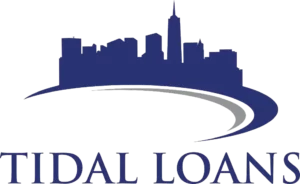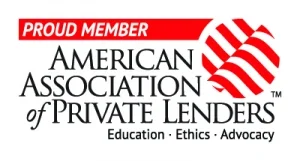Ever thought about why getting a commercial loan for a rental property is harder than a home loan? Learning about commercial real estate loans can help investors earn more from rental properties.
Getting a loan for an investment property is more complex than a home loan. These loans are for business use, like office buildings or apartments. They require a big down payment but offer big returns.

For those exploring commercial real estate loans, Tidal Loans LLC can help. They offer flexible financing for investment properties. Call them at 832-757-1262 or email info@tidalloans.com for more information.
Key Takeaways
- Commercial loans are for big, money-making properties like offices and apartments.
- These loans often need a big down payment, usually 20% or more.
- Lenders include banks, commercial lenders, and private investors.
- Getting these loans is tough, needing lots of financial info.
- Companies like Tidal Loans LLC provide custom solutions for investors.
Understanding Commercial Real Estate Loans
Commercial real estate loans are key for buying, building, fixing, or refinancing income-generating properties. They are made for businesses like LLCs. These loans have special features and rules.
Loan amounts can be big, from $5,000 to $500,000. They fit many investment sizes, from small to big projects. You usually need to put down 20% to 25% of the property’s value.
It’s important to know the interest rates and terms of commercial mortgages. Rates are between 3% and 20%, often 0.5% to 1% more than home loans. The prime rate, at 8.5% in early 2024, impacts many loan rates, including SBA loans which are 5% to 7% for the SBA 504.
To qualify for these loans, lenders look at a few key things. They want a credit score of at least 600, sometimes 660. They also check the Debt Service Coverage Ratio (DSCR), aiming for a median of 1.25. This means the property’s income should cover 1.25 times the loan amount.
Loan terms are from 5 to 25 years, based on the loan type and lender. Remember, closing costs are 3% to 5% of the loan amount.
Property investment loans and landlord loans have similar checks and balances. They help finance $2 million projects with bank and SBA loans. Lenders might ask for a personal guarantee and collateral to feel secure.
Getting to know commercial real estate loans helps investors make smart choices. It improves their financial plans and uses market chances well.
Types of Commercial Property Loans
Getting a loan for commercial property can be complex. But knowing the different types can help investors make better choices. We’ll look at the main types of commercial property loans. Each one is good for different needs and situations in multi-family lending and rental property mortgages.
SBA Loans
SBA loans are great for buying commercial properties you plan to own. They are backed by the government and can lend up to $5 million. These loans often have low down payments, between 10% to 15%, and long repayment terms.
But, getting an SBA loan is tough. You need good credit and a solid business plan. It’s a big challenge.
Permanent Loans
Permanent loans are for commercial properties and last a long time. They start with an interest-only period and then switch to fixed rates. This gives stability for a long time.
Investors use these loans for multi-family lending or rental property mortgages. They offer flexible terms for both short and long-term goals. But, banks usually want a 20% down payment and strict LTV ratios.
Blanket Loans
Blanket loans are great for experienced investors with many properties. They let you combine several properties into one loan. This means one easy monthly payment.
They’re perfect for managing a large portfolio. You can sell individual properties without affecting the loan. This flexibility is key for investors who want to manage their finances well. Blanket loans are also good for big multi-family lending projects, offering the same terms for all properties.
If you want to learn more about loan options, like hard money loans from private lenders, check out this page.
Difference Between Commercial and Residential Loans
It’s important to know the difference between commercial and residential loans if you’re thinking about real estate. Both types of loans have different uses, requirements, and risks. Let’s look at the main differences.
Loan Terms
One big difference is the loan terms. Residential loans, for homes or properties with up to four units, have long terms like 15 or 30 years. They have regular monthly payments.
Commercial loans, for bigger properties, have shorter terms and might need big payments at the end. Commercial real estate loans can last from a few months to 25 years. They often require a 20% down payment.
Eligibility Criteria
Eligibility for commercial and residential loans is different. Residential loans look at personal income, credit, and debt. They might ask for W-2s, pay stubs, and tax returns.
Commercial loans focus on the property’s income and financial health. They check rental income, cash flow, and potential earnings. This makes commercial loans a good choice for those investing in many properties.
Risk Factors
Risk levels differ between commercial and residential loans. Residential loans are seen as safer with longer terms and lower rates. They usually require a 3% to 25% down payment.
However, there are limits on how many residential loans you can get. Ten for individuals, twenty for couples. Commercial loans have higher limits but are riskier. They have higher rates, more chance of default, and strict requirements.
Also, commercial loans have higher fees and closing costs than residential mortgages. Knowing these differences helps investors choose wisely between small business loans and traditional residential loans. It ensures a smart approach to real estate investments.
Eligibility Criteria for a Commercial Loan
Getting a commercial loan means you must meet certain criteria. Lenders check these to see if the loan is safe and profitable. One important thing is the Debt Service Coverage Ratio (DSCR). This shows if the property’s income can cover the loan payments. Lenders usually want a DSCR of 1.25 or more.
Debt Service Coverage Ratio
The Debt Service Coverage Ratio (DSCR) is key for getting a commercial loan. Lenders want a DSCR of 1.25 or higher. This means the property’s income is enough to pay off the loan. It shows if the borrower can handle the loan payments without trouble.
Credit History
Credit history is also very important. A good credit score shows you’re financially reliable. For example, SBA 7(a) loans need a FICO SBSS score of 155 or more. But, there are some exceptions.
Property Appraisal
Finally, a detailed property appraisal is needed. It estimates the property’s value and how profitable it could be. This helps figure out the loan-to-value (LTV) ratio. Commercial loans usually have an LTV between 65% and 80%. This makes sure the property’s value matches the loan amount, which is good for the lender.
Steps to Qualify for a Commercial Loan for Rental Property
To get a commercial loan for rental property, you need to know the steps. Follow these steps carefully and make sure you meet all the requirements.
Prepare Financial Documents
The first step is to gather your financial documents. You’ll need income statements, balance sheets, and tax returns. Lenders will check these to see if you’re financially stable. With loans often over $2 million, it’s crucial to have accurate and detailed documents.
Find the Right Lender
Choosing the right lender is key. You can look at traditional banks, commercial lending firms, or private investors. Each has different rates, terms, and conditions, often requiring a 20-25% down payment. It’s important to pick a lender who gets your business goals.
Submit Application
The last step is to submit your loan application. This can take 5 to 30 days. Make sure your application is strong, with a solid business plan and detailed property info. A well-prepared application is key to getting a loan for your rental property.
Benefits of Commercial Loans for Rental Properties
Understanding the benefits of commercial loans can greatly improve your investment results. These loans offer several advantages that make them a great choice for those investing in rental properties.
Higher Return on Investment
One key benefit is the chance for a higher Return on Investment (ROI). Properties with more than four units can bring in 6% to 12% returns. This is because they can earn income from many tenants, unlike single-family homes.
Quick Funding
Another big plus is the quick access to funds. Commercial loans are made for urgent needs, helping investors grab opportunities fast. This is crucial in the fast-paced world of real estate.
Real Estate Equity
These loans also help build real estate equity. By keeping low Loan-to-Value (LTV) ratios, investors can keep a lot of equity in their properties. This equity is not just a safety net but also a tool for future investments.
Having a lot of equity is also key for getting more loans later. Many investors use the equity from one property to fund another, creating a cycle of growth and profit.
The benefits of commercial loans are clear. They help investors grow their real estate ventures. With higher ROI, quick funding, and valuable equity, these loans are a powerful tool for success in the rental property market.
How to Get a Commercial Loan for Rental Property
Getting a commercial loan for a rental property requires several steps. First, know which properties qualify and their categories. Businesses like corporations and developers can get these loans.
Next, figure out how much you need and the loan-to-value (LTV) ratios. LTVs are usually 65% to 80%. You’ll need to make a down payment of about 20%, unlike residential loans starting at 3%.
Then, understand the interest rates and repayment terms. Commercial loans have higher rates because they’re riskier. You’ll also face various fees, adding to the cost.
Loan terms are shorter, from five to 20 years. DSCRs, or Debt Service Coverage Ratios, are key. Lenders want at least 1.25 to ensure you can pay the loan with rental income.
Finding the right lender is important. Banks offer good rates but are strict. Private investors might be more flexible. Approval times vary, from five to 30 days.
Prepare a detailed financial package for the lender. This includes financial statements and property appraisals. The lender will check if the loan is viable.
After applying, lenders will look at your business plan and finances. They’ll also check your credit and the property’s potential. Negotiating terms, like prepayment penalties, might be part of the process.
Getting a commercial loan can mean higher loan amounts and bigger returns, 6% to 12%. By following these steps, you can get the right loan for your rental property.
Interest Rates and Repayment Terms
Understanding commercial loan interest rates and repayment terms for commercial loans is key. These factors greatly affect your financial plan and investment strategy.
Interest Rate Ranges
Commercial loan interest rates vary a lot. They usually range from 3% to 6% for bank loans. The rate depends on the lender and the borrower’s financial health. Alternative lenders might charge higher rates, especially for those with lower credit scores.
Repayment Periods
Repayment periods for commercial loans vary too. For instance, SBA 7(a) loans can last up to 25 years. Other loans might last from 5 to 20 years. The length of the repayment period impacts your monthly payments and the loan’s total cost.
Balloon Payments
Some loans require balloon payments, which are big payments due at the end. These are common in short-term loans with longer payback periods. Knowing if you’ll have a balloon payment is important for planning your repayment terms for commercial loans.
Risks Associated with Commercial Loans
Commercial loans can offer higher returns, but they also come with risks. These risks can affect your financial health and stability. Knowing these risks helps you make better borrowing choices and get ready for any challenges.
High Interest Rates
One big risk is the higher interest rates on commercial loans. These rates make borrowing more expensive, which can hurt your profits. The National Association of Realtors (NAR) says commercial loans can last from five years to 20 years.
Lenders often give up to $1 million to small businesses. But, the higher rates mean you must carefully check if the cost fits your investment plan.
Personal Financial Risks
Another big risk is the impact on your personal finances. Many lenders ask for personal guarantees for big loans. This means your home or savings could be taken if you default.
The Small Business Administration (SBA) helps by covering up to 85% of the loan if you default. But, the personal risks are still high. This shows how important it is to plan your finances carefully.
Market Fluctuations
Fluctuations in the real estate market are another big risk. The value of commercial property in the U.S. is at 185.62, showing a slow increase. But, these values change due to the economy, housing demand, and interest rates.
For example, renting one square foot of office space in California costs $481.95. This is much higher than the average due to rising labor and material costs. These changes can affect the value and income of commercial properties, making it hard to pay off the loan.


